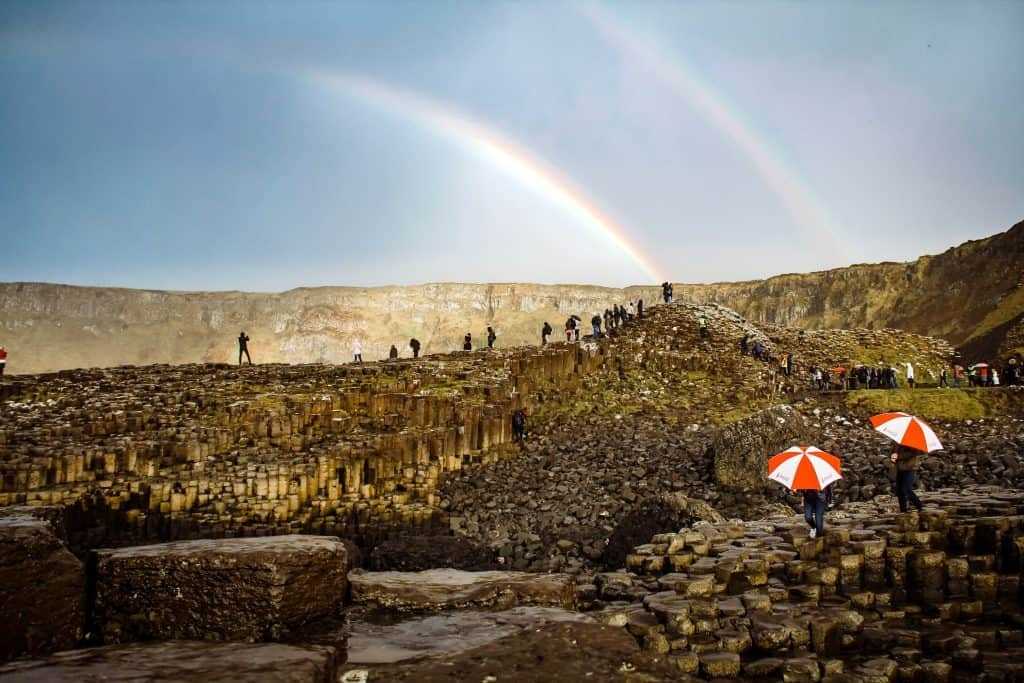The Giant’s Causeway: Geological Wonder in Northern Ireland
Nestled on the rugged coast of County Antrim in Northern Ireland, the Giant’s Causeway is a breathtaking natural wonder that has captivated visitors for centuries. This UNESCO World Heritage Site is renowned for its unique geological formations, steeped in myth and legend, and offers a stunning landscape that is both awe-inspiring and accessible to all.
What to See at the Giant’s Causeway
The Giant’s Causeway is famous for its approximately 40,000 interlocking basalt columns, which were formed by volcanic activity around 60 million years ago. These hexagonal columns, some of which reach heights of up to 12 meters, create a surreal landscape that looks almost otherworldly. As you explore the site, you’ll find several notable formations, including the Giant’s Boot, the Wishing Chair, and the Organ Pipes, each with its own unique shape and story.
The site also offers breathtaking views of the North Atlantic Ocean and the surrounding cliffs. On a clear day, you can see the coast of Scotland across the sea. The area is rich in wildlife, with seabirds such as fulmars and razorbills often spotted along the cliffs. For those interested in hiking, there are several trails of varying difficulty that offer different perspectives of the Causeway and its stunning surroundings.
A Bit of History and Interesting Facts
The Giant’s Causeway has been a source of fascination for centuries, with its origins steeped in local folklore. According to legend, the columns are the remnants of a causeway built by the giant Finn McCool, who wanted to cross the sea to fight his Scottish rival, Benandonner. This tale adds a layer of mystique to the already enchanting landscape.
Scientifically, the Causeway was formed during the Paleogene Period when intense volcanic activity caused molten basalt to flow and cool rapidly, creating the distinctive hexagonal shapes. The site was first documented in the late 17th century and has since become one of Northern Ireland’s most popular tourist attractions.
An interesting fact about the Giant’s Causeway is that it has inspired artists and writers for generations. It was famously depicted in the works of Irish painter William Ashford and has been referenced in literature by authors such as Jules Verne.
Getting There and Tips for First-Time Visitors
The Giant’s Causeway is easily accessible by car, bus, or train. If you’re driving, it’s about a 90-minute journey from Belfast. There is a visitor center with parking available, though it can get busy during peak times. Alternatively, you can take a train to Coleraine and then a bus to the site. Guided tours are also available from major cities like Belfast and Dublin, which can be a convenient option if you prefer not to drive.
For first-time visitors, it’s worth stopping by the visitor center, which offers interactive exhibits about the geology and mythology of the Causeway. There’s also a café and gift shop on-site. Wear comfortable shoes, as the terrain can be uneven, and bring a raincoat, as the weather can be unpredictable. The site is open year-round, but visiting during the early morning or late afternoon can help you avoid the crowds and enjoy a more peaceful experience.
The Giant’s Causeway is a must-see destination for anyone visiting Northern Ireland. Its unique geological formations, rich history, and stunning natural beauty make it a place that leaves a lasting impression on all who visit.








